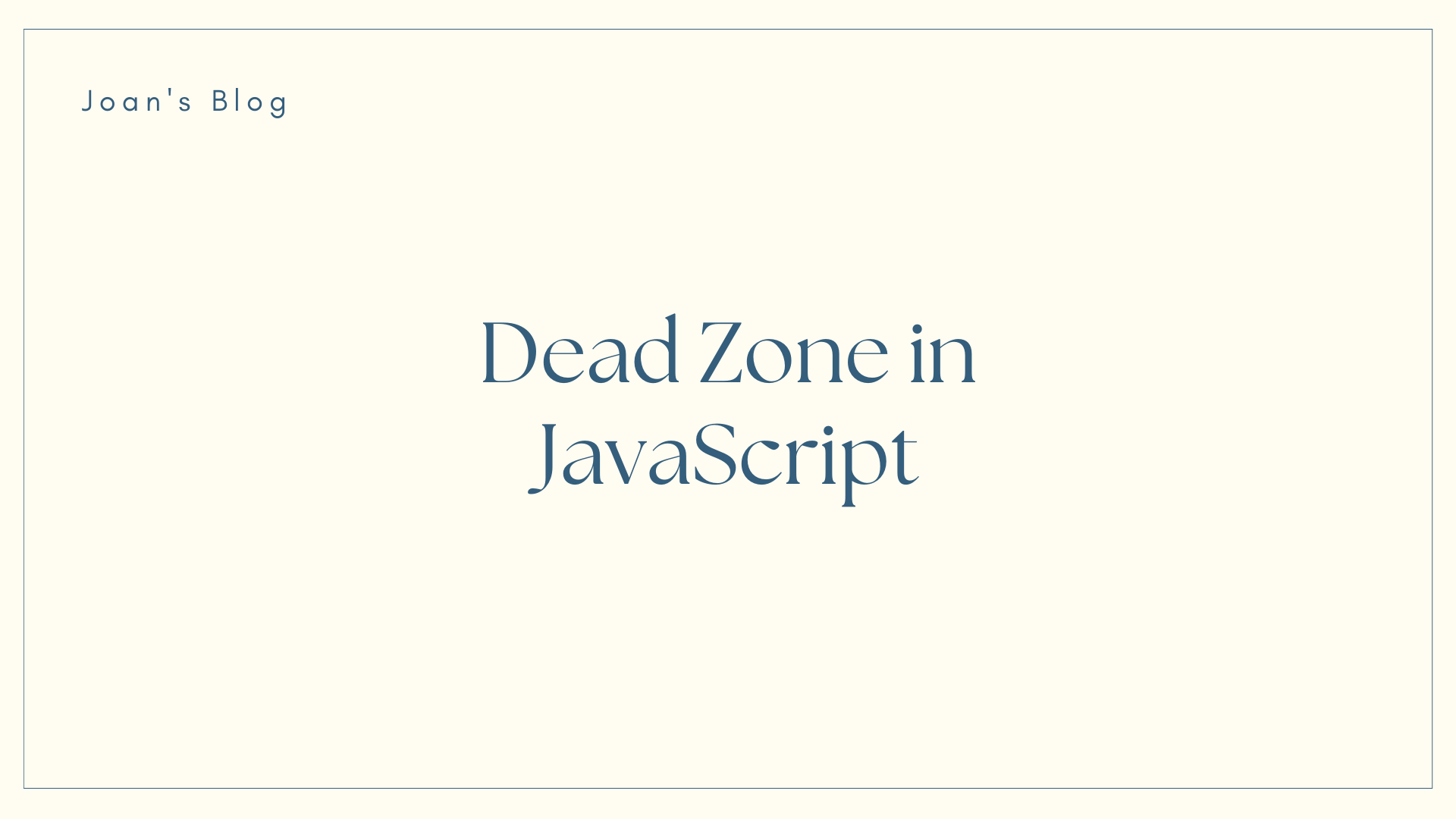In JavaScript, you may encounter the term "dead zone." While it might sound tricky, understanding dead zones is crucial for writing efficient and bug-free code.
In this comprehensive guide, we'll explore what dead zones are, how they affect your code, and how to navigate them effectively.
Table of Contents
- What is a Dead Zone?
- Variable Hoisting and Dead Zones
- Dead Zones with let and const
- Dead Zones with var
- How to Handle Dead Zones
- Benefits of Avoiding Dead Zones
- Conclusion
What is a Dead Zone?
In JavaScript, a dead zone refers to a phase during the execution of your code where a variable exists but cannot be accessed.
This occurs due to the behavior of variable hoisting, a mechanism where variable declarations are moved to the top of their scope during compilation, while their assignments remain in place.
Dead zones typically occur with variables declared using let and const.
Variable Hoisting and Dead Zones
Let's illustrate this concept with an example:
console.log(myVar); // Output: ReferenceError: Cannot access 'myVar' before initialization
let myVar = 42;
In this example, despite declaring myVar with let, trying to access it before the declaration results in a ReferenceError.
This happens because although the declaration of myVar is hoisted to the top of the scope, its initialization remains at its original position. Thus, there's a period between the hoisting and the actual initialization where accessing the variable will cause an error.
Dead Zones with let and const
Variables declared with let and const are hoisted differently compared to variables declared with var.
While var is hoisted and initialized with undefined, let and const remain uninitialized during the hoisting phase. This behavior leads to dead zones with these variable declarations.
Consider this example:
console.log(myVar); // Output: undefined
var myVar = 42;
In this case, using var, myVar is hoisted and initialized with undefined, allowing it to be accessed before its actual assignment.
However, if we rewrite the code using let or const:
console.log(myVar); // Output: ReferenceError: Cannot access 'myVar' before initialization
let myVar = 42;
Here, using let, myVar is hoisted but not initialized. Attempting to access it before the initialization results in a ReferenceError, indicating a dead zone.
Dead Zones with var
While var declarations in JavaScript behave differently compared to let and const, they can still lead to dead zone issues if not used carefully.
Understanding how var behaves in terms of hoisting and scoping is essential for identifying and mitigating dead zones effectively.
Variables declared with var are hoisted differently compared to let and const.
With var, both the declaration and initialization are hoisted to the top of their scope. However, the variable is initialized with undefined during the hoisting phase.
Let's illustrate this behavior with an example:
console.log(myVar); // Output: undefined
var myVar = 42;
In this example, myVar is hoisted to the top of the scope, and its declaration is initialized with undefined.
Therefore, attempting to access myVar before its actual assignment results in undefined, rather than a ReferenceError as with let and const.
How to Handle Dead Zones
To avoid encountering dead zones in your code, it's crucial to follow best practices:
- Declare Variables Before Use: Always declare variables at the beginning of their scope to minimize the chances of encountering dead zones.
- Understand Block Scope: Variables declared with
letandconsthave block scope, meaning they are only accessible within the block in which they are defined. Understanding block scope helps you manage variables effectively. - Use
varwith Caution: Whilevardoesn't typically lead to dead zones, it has different scoping rules compared toletandconst. Usevaronly when necessary and understand its implications. - Utilize Coding Linters: Many coding linters can identify potential dead zone issues in your code, helping you catch these errors early in the development process.
Benefits of Avoiding Dead Zones
By proactively identifying and mitigating dead zones in your JavaScript code, you can reap several benefits that contribute to overall code quality and maintainability:
- Preventing Unexpected Errors: Eliminating dead zones reduces the likelihood of encountering
ReferenceErrors or other unexpected runtime errors, resulting in more predictable code behavior and smoother execution. - Improving Code Readability: Code without dead zones is easier to understand and maintain, as developers can confidently reason about variable scope and initialization throughout the codebase. This leads to improved readability and reduced cognitive load when reviewing or modifying the code.
- Enhancing Debugging Efficiency: With fewer instances of dead zones, debugging becomes more straightforward, as developers can focus on legitimate issues rather than chasing down errors caused by uninitialized variables or incorrect variable access.
- Facilitating Collaboration: Clean, dead zone-free code fosters collaboration among team members by reducing the likelihood of misunderstandings or misinterpretations related to variable scoping and initialization. This promotes efficient code reviews and smoother integration of changes into the codebase.
Conclusion
Dead zones in JavaScript can be tricky to navigate, but understanding how they occur and how to handle them is essential for writing robust code.
By grasping the concepts of variable hoisting and block scope, you can effectively manage variables in your code and avoid common pitfalls associated with dead zones.
Remember to declare variables before use and use let, const, and var appropriately to write clean and maintainable JavaScript code.
Connect with me on LinkedIn.

